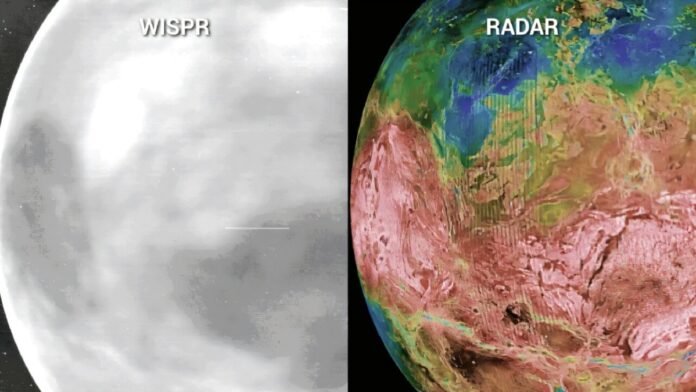NASA’s Parker Sun Probe will shoot its closing gravity help with Venus, skimming simply 233 miles (376 km) above the planet’s floor, on November 06, 2024. This near stumble upon will redirect Parker onto its ultimate trajectory, positioning it to progress inside a record-breaking 3.86 million miles of the solar’s floor on December 24. This manner marks the nearest any human-made spacecraft has come to the solar, a landmark in area exploration.
A Prospect Discovery Unveils Venus’s Floor
As in line with a up to date report through NASA, Parker’s previous Venus flybys yielded sudden discoveries in regards to the planet. The use of the Huge-Farmland Imager for Parker Sun Probe (WISPR), scientists to begin with supposed to watch adjustments within the planet’s thick cloud secure. Then again, all over the 3rd flyby on 11 July 2020, WISPR detected near-infrared bright emanating from Venus’s floor, revealing main points past the clouds. Consistent with Noam Izenberg, a area scientist at Johns Hopkins Implemented Physics Laboratory, the serious floor warmth—round 869°F (465°C)—allowed WISPR’s cameras to seize Venus’s scorching floor under the thick cloud layers.
Those unutilized pictures of Venus align with radar knowledge from NASA’s previous Magellan undertaking, which mapped Venus’s topography between 1990 and 1994. The resemblance in patterns suggests homogeneous landforms, but WISPR’s pictures confirmed sudden bright in some subjects, elevating questions on conceivable floor variations. This unedited flyby is predicted to handover spare insights, serving to scientists decide if WISPR can establish chemical or bodily diversifications on Venus.
Drawing near the Solar’s Interior Mysteries
Following the November flyby, Parker Sun Probe will head towards the solar to reach its undertaking’s primary purpose: to watch the sun surrounding up near. As Parker closes in at the solar’s floor, it is going to move thru areas stuffed with sun plasma and probably inside sun eruptions. Adam Szabo, Parker’s venture scientist at NASA’s Goddard Territory Gliding Middle, highlights this as a vital feat of engineering, because the spacecraft will have to undergo massive warmth and radiation.
Parker will succeed in its perihelion, or closest sun move, on 24 December. The workforce at NASA will obtain a condition sign on 27 December, confirming the probe’s status post-mission. Parker’s travel will proceed, finishing two extra perihelion passes, however its Dec. 24 orbit will prepared an unequalled list in proximity to the solar, offering unprecedented knowledge on our celebrity’s inside workings.


